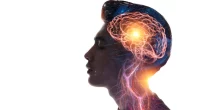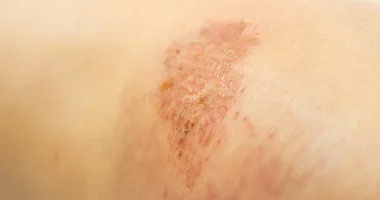A branchial cleft cyst is a birth defect that appears as a lump on the single or both sides of the neck. This unusual tissue can create sacs filled with fluid or passages that allow fluid to drain out onto the skin of the neck. These cysts are also known as lateral branchial cysts.
These cysts form because the structures in the face and neck do not grow normally while a baby is growing in the womb. This can cause abnormalities in the anatomy of the neck and face.
What is a Branchial Cleft Cyst?
The face, neck, and upper chest develop from embryonic structures known as branchial arches. The term “branchial” comes from the Latin word “branchia,” meaning “gills.”
During the 4th week of pregnancy, five pharyngeal arches, or branchial forms, are separated by four indentations called clefts. As the baby develops, these clefts usually shrink and are buried by the seventh week of pregnancy. However, if the clefts do not shrink or only partially shrink, they can cause branchial cleft anomalies, such as palate or cleft lip and lateral branchial cyst.
These can appear in three forms:
- Branchial cleft cyst: This is a sac lined with tissue that has no outside opening to the outside or inside of the neck. The sac can fill with fluid and become a cyst.
- Branchial cleft fistula: The cleft forms a connection between the larynx or pharynx and the outside of the skin.
- Branchial cleft sinus: The cleft may connect to the skin’s surface through a visible opening, called a punctum, or to internal structures like the larynx or pharynx.
A branchial cleft cyst can exist alone or alongside a fistula or sinus tract. In 89% of cases, the cyst appears on the right side of the neck. Although it is present at birth, it may not be noticeable or cause symptoms later. Most cysts become apparent at some point in life, often when the fluid inside becomes infected, leading to a sensitive neck mass.
Types
First lateral branchial cysts
First lateral branchial cysts make up about 5 to 25% of every branchial cleft anomalies. The following are the two subtypes:
- Type 1: The opening occurs under or ahead of the ear, just above the jawline.
- Type 2: This more common subtype appears under the jawline, over the hyoid bone, and also has an opening inside in the external acoustic meatus.
Second lateral branchial cysts
Second lateral branchial cysts are the most frequent type, affecting 40 to 95% of all branchial anomalies. The external opening appears on the front and inner side of the sternocleido mastoideus, which is located at ahead of the neck. If there is an opening inside, it is likely near the tonsil region at the back of the throat.
Third lateral branchial cysts
Third lateral branchial cysts account for 2 to 8% of all branchial anomalies. If exists, the external sinus opening grows on the lower side and ahead of the SCM muscle. The opening connects to the pyriform recess in the larynx internally.
Fourth lateral branchial cysts
These are extremely rare, making up only about 1% of all branchial anomalies. They are more commonly found on the neck’s left side. This kind may loop over the aortic arch in a left-sided anomaly or over the subclavian artery in a right-sided anomaly.
Symptoms of Branchial Cleft Cysts
The symptoms of a branchial cleft cyst vary depending on its kind.
Symptoms may involve a skin tag, small mass, or mass located on the neck’s side near the sternocleidomastoid (SCM) muscle. Some cysts may also have a tiny hole in the skin that drains mucus or fluid.
These cysts can happen at any age and often do not cause signs unless there is a severe upper respiratory tract infection. During an infection, they may become sensitive, enlarged, and swollen sometimes forming an abscess. Approximately 25% of people with a branchial cleft cyst notice modifications in its size while infectioning.
More concerning symptoms may occur if the cyst suppresses the upper airway, leading to:
- Dysphagia: Difficulty in swallowing.
- Stridor: Cracking or wheezing sounds during breathing.
- Dyspnea: Breathe shortness.
Risk Factors for Branchial Cleft Abnormalities
Children who have other congenital abnormalities may face a higher chance of developing branchial cleft abnormalities. This risk is particularly notable in those diagnosed with a rare genetic condition known as branchiootorenal syndrome, which follows an autosomal dominant inheritance pattern. Autosomal dominant means that a child has a 50% chance of inheriting the condition if one parent carries the genetic mutation.
Branchial cleft abnormalities can also happen within families, suggesting a genetic predisposition where the condition may be inherited as an autosomal dominant trait.
Diagnosis of Branchial Cleft Cysts
Doctors usually determine a branchial cleft cyst through physical tests, often identifying it during babyhood. They look for an epidermis opening that retracts into the skin when the child swallows, which is characteristic of these cysts. Laboratory testing is typically unnecessary for diagnosis.
To determine the characteristics and location of the cyst, a doctor may perform various imaging tests such as a dye injection examination, cervical ultrasound, contrast-enhanced CT scan, or MRI. These tests help visualize the cyst and assess its size and relation to surrounding structures.
In some cases, sharp needle aspiration may be performed to drain fluid from the cyst. This procedure can also help doctors determine whether the mass is cancerous or benign, providing further diagnostic clarity.
Treatment Options
The treatment of lateral branchial cysts or sinuses often depends on whether there is an associated infection. In cases where infection is present, antibiotic treatment and aspiration of the cyst or sinus may be necessary to alleviate symptoms and promote healing.
Surgical removal of the cyst is typically considered an elective procedure. People may opt for surgery due to concerns such as the risk of recurrent infections, further enlargement of the cyst, cosmetic appearance, or, though rare, the potential chance of malignancy. In urgent situations where there are large abscesses or compromised airways, immediate surgery may be required to prevent serious complications.
For individuals who are unable to undergo surgery, ethanol ablation presents an alternative treatment option. This minimally intrusive procedure involves using an alcohol solution to destroy the cyst, offering a non-surgical approach to managing the condition.
Complications
Continuous infections are a common complication associated with lateral branchial cysts. Reports indicate that infection recurrence after surgery can occur in 3 to 22% of cases, often due to incomplete cyst elimination during surgery.
Like with any neck operation, other potential complications may arise, including hematoma (blood clot), seroma (fluid buildup), postoperative infection, formation of a visible scar on the neck, and temporary or permanent paralysis or nerve weakness.
While rare, long-standing lateral branchial cysts can lead to more serious problems like squamous cell carcinoma, a kind of skin cancer. A recent 2021 case study highlighted an even rarer complication where a metastatic papillary thyroid carcinoma developed as a consequence of a branchial cleft cyst. These instances underscore the importance of monitoring and appropriate management of these cysts to prevent potential complications.
Summary
Branchial cleft cysts are congenital abnormalities that can appear as lumps on the neck due to developmental issues in the embryonic branchial arches. They may present with symptoms like a visible mass, skin tag, or draining hole, especially during infections. Diagnosis involves physical exams and imaging tests, with treatment options including antibiotics, surgical removal, or ethanol ablation.
Complications can include recurrent infections, surgical risks like hematoma or nerve damage, and rarely, the development of squamous cell carcinoma or thyroid cancer. Understanding these complexities guides medical management, emphasizing early diagnosis and tailored treatment approaches to minimize risks and ensure optimal outcomes.









